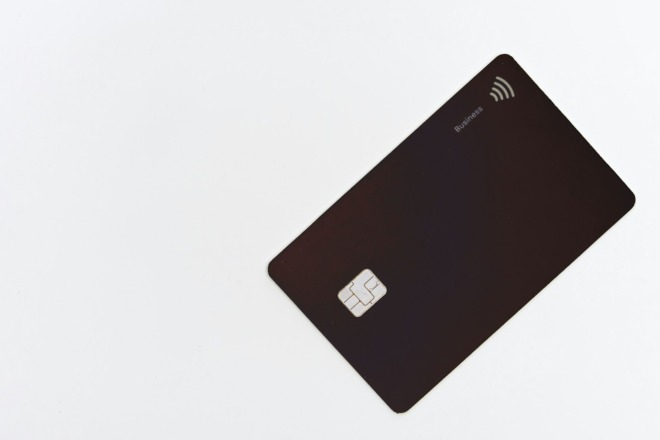Freelance designers often experience ups-and-downs regarding their number of projects. Some months can consist of too few opportunities, while others seem overloaded to the point of exhaustion. Taking on new work can seem stressful and daunting–but it doesn’t have to be.
With the tips below, you’ll be able to handle your workflow better and take on new work, too.
Have a Project Standard

Courtesy of Giphy
Even if you’re struggling to find work, you need to have standards for yourself. If you’re committing all your time to one client, you may not have the time for when a better opportunity comes along. Ensuring that you only work on projects that compensate you fairly for your time and creativity is essential to working steadily while also keeping your opportunities open.
Consider these aspects when deciding to say “yes!” to a project or give it a polite pass:
- Client reputation — Dig deeper into who you would be working for. Type their name, as well as their business’ name, into Google. If it’s filled with consumer complaints and sketchy-looking websites, beware. A poorly designed website could mean they’re in need of your design skills. But a combination of a bad design and reputation should raise a red flag.
- Mutual understanding of requirements — Most freelancer-contractor spats arise from a lack of understanding when beginning their working relationship. The client may have a whole different expectation than the freelancer and vice versa about what’s wanted.
Ask Questions:
- Negotiation wiggle room — How willing is the client to negotiate? If they’re dismissive of a counter-offer or rude in general, be wary. A customer who won’t even considering budging on their price may be difficult to work for if they feel they’re already, “doing you a favor.” That opinion doesn’t establish a healthy freelancer-client relationship.
- Written agreement — It’s crucial to write and sign a written contract. It doesn’t have to be some legal magnum opus. A simple list of terms, including payment, and signatures will do. Oral agreements are a no-no, as written agreements can be held up in court, while oral agreements typically don’t stand a chance.
While it’s tempting to accept every client offer that comes your way, signing a customer with unreasonable demands or who’s prone to miscommunication can cause profit losses and missed opportunities on your end.
Remain Honest
It’s always best to be honest with prospective clients, especially when rejecting their offer.
Depending on the scenario, telling a potential customer, “I’d love to work with you, but I have my plate full with several other clients I’m working with. Now’s not the best time,” tells them it’s not their fault and that you’re still interested in working with them in the future. This way, during a more subdued month of work, they may turn up as a lead.
Informing a client that you may not be a fit for the job shows honesty and avoids any future conflict or difficulty finishing a project if your style differs from their wants. Deciding that the partnership is not for the best can save a lot of future headaches and damage to your reputation, courtesy of reviews on Google, Facebook or other platforms.
Never Work for Free When Taking on New Work

Courtesy of Giphy
A freelancer’s time is limited. Never work for free. Of course, if there’s a promising startup you love, and they’re offering you stock options, that’s a different story.
If an individual client is saying they’re on hard times or would prefer to pay you in merchandise or non-monetary items, stay away. If they’re unwilling to pay, it’s unlikely they have the exposure or reach to provide much recognition anyway.
Potential clients may also ask for too much work for too little money. Handle the situation by saying that the financial terms aren’t up to the rate you usually charge. If they protest, let them know that your price is firm and that they know where to reach you if their budget changes.
Stay in Your Field of Expertise
It’s a fantastic idea to expand your area of expertise and skillset, but reserve that practice for your own time. Don’t take projects outside of your skill range until you’re experienced enough to be confident in the result.
A freelance writer isn’t a web designer or vice versa. Although some of these positions are cross-compatible, a client who demands that you assume the role of multimedia, copy and design may be putting too much on your plate. This can result in finished projects that leave them dissatisfied.
Maintain a Spreadsheet
Starting a spreadsheet on Google Drive or Excel with a list of your projects, clients, specifications and whatever else may be helpful. Keeping it on Google Drive also means it’s connected to the cloud. It’s accessible from anywhere, which can come in handy when you’re on the go.
If you’re an individual freelancer juggling a dozen or so clients, maintaining a spreadsheet with columns like “Last Date of Contact” can help ensure you’re not neglecting any of your customers or projects.
Create Office Hours

Courtesy of Giphy
Even if you’re doing all your freelance work at home in your pajamas, it’s important to establish office hours when taking on new work. This gives contacts a good idea of when you’re available to chat.
Not providing office hours can result in some clients contacting you during off-hours. This adds to your stress when you should be relaxing. Additionally, if a customer emails you late at night, they can refer to your office hours. This will give them an idea as to when they should expect a response back.
Outsource If Necessary
A diligently managed workflow can still lead to overbooking when taking on new work — in fact, if you’re an active freelancer, it will happen. Since you don’t want a disappointed, refunded client, consider outsourcing less intensive but time-consuming activities.
For example, if you’re a graphic designer and are running close to a deadline, seek help. Hire another graphic designer to help with a particular aspect of the project. Sites like Upwork can help you find fellow freelancers that can help you finish a job.
Selectively choosing your projects, managing workflow with project analysis and spreadsheet-based upkeep and learning to say “no” to unfit projects can help you improve your work, and build your client base, as a freelancer.


